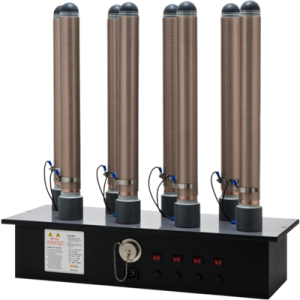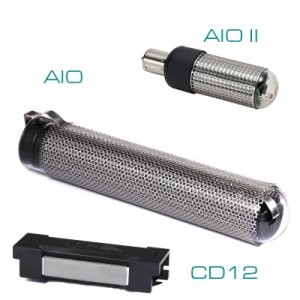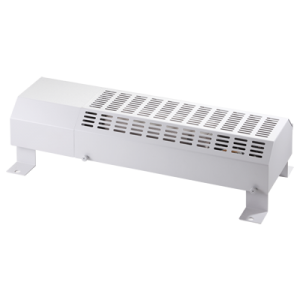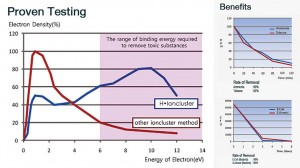
Clean Air
“Clean air is a basic requirement of life. The quality of air inside homes, offices, schools, day care centers, public buildings, health care facilities or other private and public buildings where people spend a large part of their life is an essential determinant of healthy life and people’s well-being. Hazardous substances emitted from buildings, construction materials and indoor equipment or due to human activities indoors, such as combustion of fuels for cooking or heating, lead to a broad range of health problems and may even be fatal.” (Source: World Health Organization, WHO Guidelines for Indoor Air Quality: Selected Pollutants, 2010)
The ACE Solution:
![]()
A technology that uses powerful ingredients from the moisture in the air (H2O) to create very effective ions that clean and improve indoor air quality. All our systems and processes incorporate this technology to actively fight the pollution that is in the environment, and to continuously protect against stale air and the built up of any new pollutants introduced into that environment.
![]() technology increases the most important ingredient needed for great indoor air quality, which is oxygen. By breaking up moisture in the air, our systems increase the levels of oxygen in the air to make the air quality even more pure and stimulating.
technology increases the most important ingredient needed for great indoor air quality, which is oxygen. By breaking up moisture in the air, our systems increase the levels of oxygen in the air to make the air quality even more pure and stimulating.
Typically, normal indoor air with windows open in an urban environment is 250-500 negative oxygen ions per cubic centimeter of air. Negative ion levels near a waterfall tend to be in the 25,000-100,000 per cubic centimeter range. This is a principal that we at ACE have not overlooked when we provide our solutions. Our technology will greatly increase the negative oxygen ions in the areas being treated.
Our systems work to bring your indoor air its optimum.
| Outdoor Air | Indoor Air | |
| Typical air | 200-3000 ions/cm3 | 10-100 ions/cm3 |
| Optimal air | 7000-14000 ions/cm3 | 1000-1500 ions/cm3 |
![]() technology uses a patented Dielectric Barrier Discharge (DBD) method to create millions of positive and negative ion clusters to move through the environment. Ion clusters are proven to actively fight against: bacteria, viruses, moulds, odours, Volatile Organic Compounds (VOCs), smoke, and reduce the concentrations of airborne allergens, fine and ultra fine particulate. The ion clusters are capable of fighting both airborne and surface biological pollutants, which is a great advantage of this system because biological contaminants must be treated on the surfaces where the colonize. Our eV12 has a proven high efficacy rating. Read about our research.
technology uses a patented Dielectric Barrier Discharge (DBD) method to create millions of positive and negative ion clusters to move through the environment. Ion clusters are proven to actively fight against: bacteria, viruses, moulds, odours, Volatile Organic Compounds (VOCs), smoke, and reduce the concentrations of airborne allergens, fine and ultra fine particulate. The ion clusters are capable of fighting both airborne and surface biological pollutants, which is a great advantage of this system because biological contaminants must be treated on the surfaces where the colonize. Our eV12 has a proven high efficacy rating. Read about our research.
![]() technology distinguishes itself from all other competing air quality technologies. Our technology uses an industry leading process that creates ion clusters with bonding charges of up to eV12 (electron volts), the highest level in the industry. eV12 allows our technology to fight off and protect the environment against the widest range of odours and gasses when compared to competing technologies, over 200 different compounds, without compromising the safety of the air for occupants of the environment.
technology distinguishes itself from all other competing air quality technologies. Our technology uses an industry leading process that creates ion clusters with bonding charges of up to eV12 (electron volts), the highest level in the industry. eV12 allows our technology to fight off and protect the environment against the widest range of odours and gasses when compared to competing technologies, over 200 different compounds, without compromising the safety of the air for occupants of the environment.
![]()
The indoor environment is not as friendly as some mistake it to be. Studies done by the United States Environmental Protection Agency (U.S. EPA) and the World Health Organization (WHO) reflect that the indoor air quality can be up to ten times more polluted than outdoor air quality. People are suffering due to allergies, asthma and breathing related problems, viral and bacterial infections, multiple chemical sensitivities and sick building syndromes, and malodorous nuisances.
Historically, indoor air treatment has only been able to prevent/protect people in limited ways through passive approaches like filters and UV lights. Though these passive technologies have been able to improve the indoor air quality to some degree, they have not been able to optimize or revitalize the indoor air for healthy living. Our commitment at Active Clean Environmental (ACE) is to provide better solutions than what are currently available.
Countless universities and professional scientific institutions around the world have conducted tests on ion cluster technology and have helped with the advancement of this industry. The ![]() technology we provide at ACE is leading the world in the design and application of active air cleaning equipment/solutions using the ion clusters technology. This is a step forward in air quality advancement from passive and/or filter based technologies.
technology we provide at ACE is leading the world in the design and application of active air cleaning equipment/solutions using the ion clusters technology. This is a step forward in air quality advancement from passive and/or filter based technologies.
WE DO HAVE THE BETTER SOLUTIONS YOU NEED!
How Advanced Ion Cluster Technology Works
The ![]() advantage is the continuous addition of positive and negative ion clusters into interior spaces.
advantage is the continuous addition of positive and negative ion clusters into interior spaces.
The theory behind the process came from observing the various natural outdoor environmental air qualities and the affects they have on people. Typically, environments with increased electrical energy and water are cleaner and feel more fresh to breathe in, such as waterfalls, caves, and after rain.
On the other hand, the indoor air is stale and has minimal ion levels. Furthermore, the few ions that are indoors are lost when contacting with pollutants in the air or lost in contact with walls, furnishing, carpets, and drapery. These reduced levels of ions mean high pollution levels (low ion levels create an optimal environment for the growth of pathogens) and pose various/serious health risks.
The ion is an electrically charged atom or atom group, which is generated when a neutral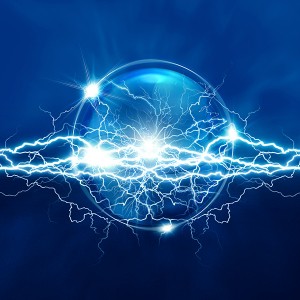 atom or atom group loses an electron (+ ion) or gains an electron (- ion). The cluster refers to a number of things of the same kind. Therefore, the ion cluster means a number of grouped ions. However, in terms of pollution removal, the ion cluster has a specific meaning. It refers to an ion cluster where H2O is bonded with Hydrogen (+H) or Molecular Oxygen (-O2).
atom or atom group loses an electron (+ ion) or gains an electron (- ion). The cluster refers to a number of things of the same kind. Therefore, the ion cluster means a number of grouped ions. However, in terms of pollution removal, the ion cluster has a specific meaning. It refers to an ion cluster where H2O is bonded with Hydrogen (+H) or Molecular Oxygen (-O2).
It is known that +H or -O2 bonded with H2O molecules is effective in removing pollutants, germs and viruses. Also, the ion surrounded by H2O molecules has a longer life of around 120 seconds rather than the ion with it’s cluster. ![]() uses the Dielectric Barrier Discharge (DBD) process to break water molecules in the air and create the ion cluster. These clusters have a natural pull (due to the electric charges) to pollutants in the air and on adjacent surfaces. When ion clusters meet pollutants, in the air or on surfaces, the pollutant is attracted to the charged ion inside the cluster of H2O molecules. When the ions surround a pollutant, the pollutant is either “oxidized” or given a charge to be destroyed, pulled apart and altered, or it’s weighed down to fall out of the air.
uses the Dielectric Barrier Discharge (DBD) process to break water molecules in the air and create the ion cluster. These clusters have a natural pull (due to the electric charges) to pollutants in the air and on adjacent surfaces. When ion clusters meet pollutants, in the air or on surfaces, the pollutant is attracted to the charged ion inside the cluster of H2O molecules. When the ions surround a pollutant, the pollutant is either “oxidized” or given a charge to be destroyed, pulled apart and altered, or it’s weighed down to fall out of the air.
Ion Cluster Process Expanded
![]() ion clusters have a very calculated and scientifically proven method to improve and optimize your indoor air quality.
ion clusters have a very calculated and scientifically proven method to improve and optimize your indoor air quality.

* Remove airborne allergens and particulate matter
• Particulate matter is electrically charged. Examples: dust, pollen, dander, smoke.
• Ion clusters are naturally attracted to particulate matter in the air, even the ultra fine particles too small for any filtration
• The ion cluster congregates on the surface of the particle increasing the particulate’ weight
• The particulate matter becomes too heavy to be suspended in the air and falls out of the breathing air to the ground
* Deodourize and deactivate Volatile Organic Compounds (VOCs)
• Ion clusters will have contact with odourous molecules or VOCs
• Gasses and odours in the air carry their own energy level, which vary depending on what they are
• Once contact is made with an ion, if the energy level of the gas or odour is weaker than that of our ion cluster, it will be pulled apart and used by the ion cluster to create CO2 or H20 by products. A process called oxidation
• With an electron variance of eV12 our ion clusters are capable of breaking apart a very large number of harmful gasses and obnoxious odors, i.e. formaldehyde and ammonia (see chart on eV12 page for a complete list of chemical compounds).

* Kill Pathogens and sanitize the air and contact surfaces
•The ion clusters begin to surround the pathogen because of a mutually attractive charge.
• Upon contact the ion clusters begin to circulate around the pathogen
• Both positive and negative ion clusters meet at the pathogen
• A chemical reaction takes place where the -O2 and +H ions bond to create Hydroxyl Radicals (OH)
• The OH is unstable and needs the hydrogen in the pathogen or mold
• The OH uses the hydrogen from the pathogen or mold to stabilize and become H2O
• The pathogen cannot multiply, die and become proteins

eV12
eV12 is a measure of the Electron Volts (eV) carried by our ion clusters. Our ![]() technology generates an eV level of up to 12. This high level is what differentiates our technology from other competing products that have significantly lower eV levels. Our process of ion generation gives a significantly eV to our ion clusters. The eV level is crucial for the Ionization Energy (IE) which is the level of energy required to break up organic and inorganic compounds.
technology generates an eV level of up to 12. This high level is what differentiates our technology from other competing products that have significantly lower eV levels. Our process of ion generation gives a significantly eV to our ion clusters. The eV level is crucial for the Ionization Energy (IE) which is the level of energy required to break up organic and inorganic compounds.
IE is the energy required to remove one electron from a molecule. These energy levels are expressed by assigning specific eV values to each compound. The lower the IE value, the easier it is to set off a chemical reaction, the lower the eV required to pull it apart, resulting in a more effective removal by the ion cluster. If a material’s IE is greater than 12, it is difficult to remove such a material with ion cluster technology. For example, the IE of toluene is eV8.83 and that of formaldehyde is 10.88eV. Therefore, the ion cluster technology can remove toluene more easily than formaldehyde. Fortunately, with HiGen® eV12 technology, both compounds are easily broken down and removed from the environment. Other competing technologies are not capable of achieving these results.
At 12 eV HiGen® technology is more capable and effective against a wider range of odours and VOCs than other competing technologies.


